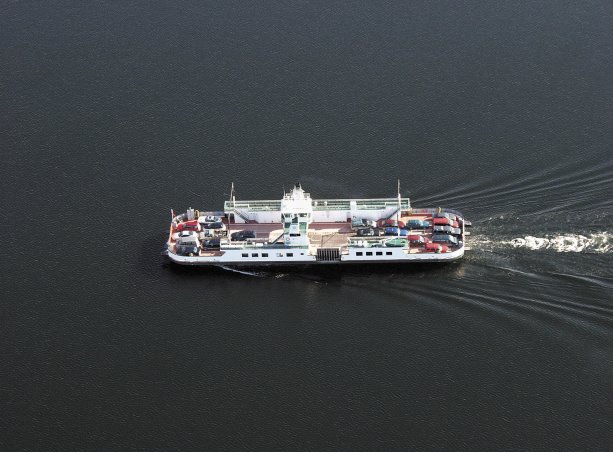The concrete docks of the Amherst Island Ferry Service are due to be replaced in a complex project that will require the successful bidder to completely replace the docking infrastructure while maintaining continuous ferry service.
The busy service operates 365 days per year and is located on the shore of Lake Ontario about 25 kilometres west of Kingston, Ont. The docking facilities are owned by the Ministry of Transportation of Ontario (MTO) and host hourly transportation for people and vehicles between Millhaven and the hamlet of Stella on Amherst Island.
However, the service has been limited by the design of the concrete docks, which requires ferry boats to load and unload from the side instead of from the end. The Frontenac II and the Quinte Loyalist, operated by Loyalist Township, are the only two side-loading ferries in MTO’s Eastern Ontario fleet.
That’s a problem because it significantly limits the efficiency of loading and unloading vehicles. It also limits access to larger vehicles, such as trucks used in construction.
"The ferry carries a wide range of traffic, including personal vehicles, but only commercial and agricultural vehicles whose length can manage the three-point turn on the deck of the ferry," says Nancy Elliott a project engineer with MTO. "We are going to ensure that we can get vehicles as large as a bus on deck."
David Thompson, director of infrastructure services at Loyalist Township, notes that some items, such as building trusses, must currently be brought in by barge, but may be accommodated on an end-loading craft.
Both ferries can be converted to end loaders, allowing vehicles to drive in one end and out the other. Converting the docks — not so easy.
"MTO will be tendering for the services of a design-build firm to complete the detailed design and construction," says Elliott. "The challenge of the project will be the staging and creating some method to allow continued and uninterrupted ferry service throughout construction, for example by providing temporary docking facilities."
Another challenge may involve transporting construction equipment and materials, including cement, to Amherst Island. Logistics will likely include significant use of barges.
Elliott notes that the current infrastructure surrounding the docks is minimal. In addition to demolition, the construction contract will include:
— changing the dock configuration from side loading to end loading;
— replacement of the bubbler system, used to aerate the water and prevent surface freezing during winter;
— improvements to the marshalling and parking areas;
— construction of new public buildings to meet operational and passenger needs;
— addition of illumination and messaging systems; and
— optimizing the access roads to the docks from both Millhaven and Stella.
The work will involve keeping water at bay at both docks, using a steel sheet pile structure anchored to the limestone bedrock at the bottom of Lake Ontario.
Although the water along the ferry route is deep, MTO will also require dredging to ensure operation of the ferries is not impacted should they face historic low water levels.
"This is already looking like a really cool project," says Elliott. "Once we reach the design-build phase it will develop into something even more interesting."
AECOM has been contracted by MTO to develop a preliminary design and undertake an environmental assessment study. A design-build firm is expected to be chosen by summer 2016 and the new ferry terminals are targeted to be operational by spring 2019. While the ministry expects that in-water construction will precede ground works, it will be the responsibility of the design-build firm to decide how to schedule the work.
Thompson notes that Loyalist Township Council plans to vote on whether it will grant the project exemptions from late-night construction noise by-laws in the interests of accelerating the work.











Recent Comments
comments for this post are closed